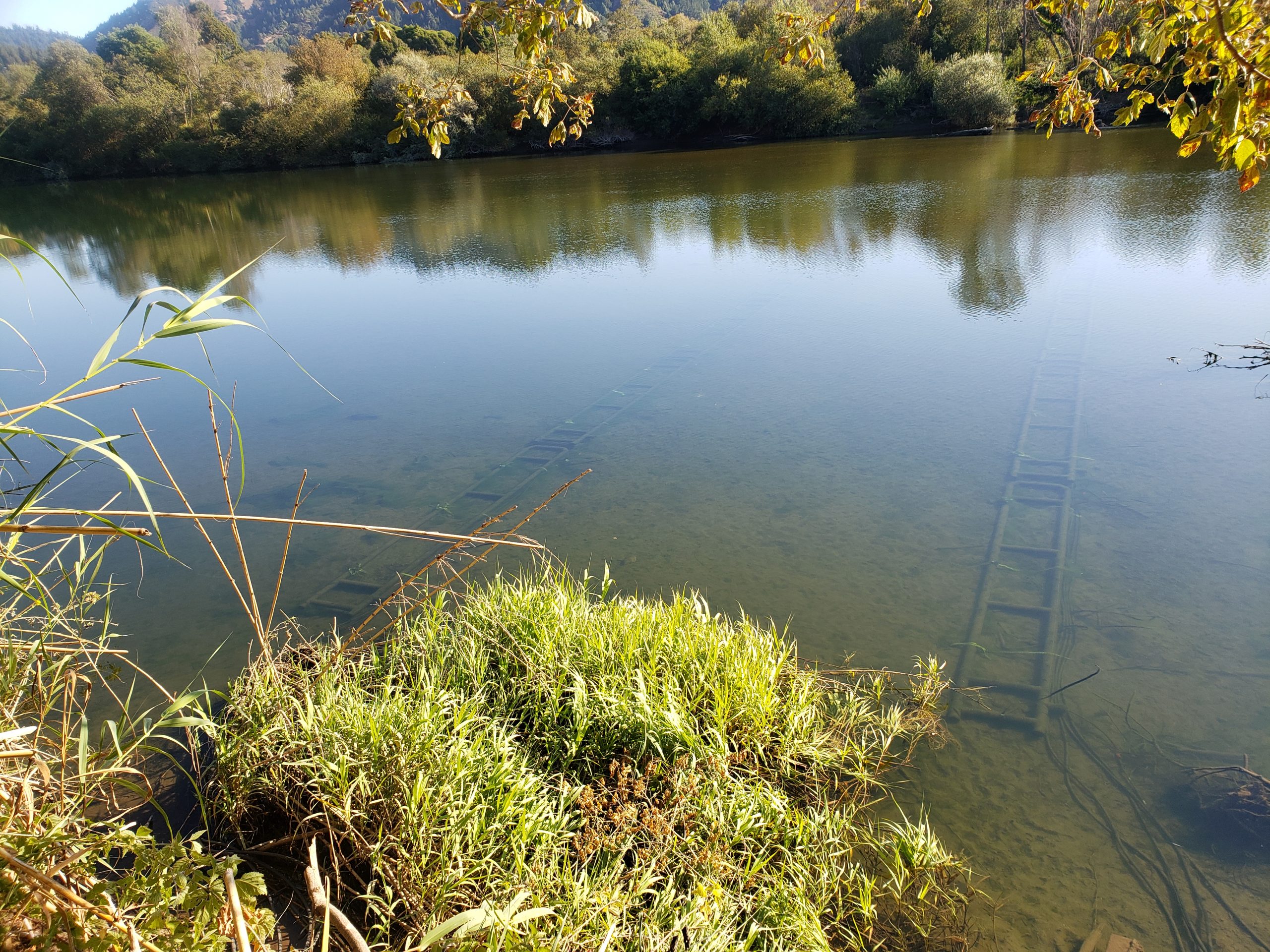

Aquatic Monitoring Systems
We understand that the most important component of research is reliable data. Good quality data is essential to the decision-making process and should be accurate, high quality, and uninterrupted. At Biomark, our goal is to provide high quality PIT-tag monitoring tools and support so you can focus on the data.
Actionable Insights for Monitoring Fish
Biomark specializes in the design, construction, and installation of PIT-tag systems for hydro-facilities, hatcheries, rivers, and many other locations. Our experience allows us to design and test numerous antenna sizes and configurations to meet the needs of unique monitoring applications. If your site is in a metropolis or on a remote mountaintop, we can provide a monitoring solution.
PIT Tag Monitoring Systems for Aquatic Applications
Biomark offers a variety or PIT tag detection systems that are made for aquatic applications. Our PIT tag monitoring antenna systems have been used inriver, fish pass, and fish ladder applications, to name a few.
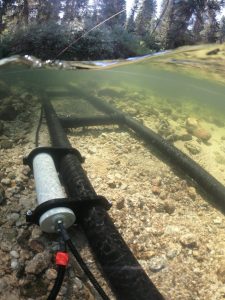
Biomark’s instream PIT tag detection systems have been instrumental in monitoring timing of movement, survival, and habitat use of aquatic organisms. Biomark’s purpose built IS1001-MTS platform is flexible enough to sample a stream 1-m wide to over 70-m wide. Our systems are reliable and can be deployed short or long-term, depending on the study objectives.
California Sea Grant and Sonoma County Water Agency are using Biomark’s PIT tag detection systems to monitor endangered Coho Salmon and threatened steelhead and Chinook Salmon in the Russian River watershed. For more than a decade, Biomark has assisted Russian River biologists in selecting appropriate equipment for specific applications, and the program currently runs nearly 20 year-round antenna arrays within the watershed. Data collected from these arrays are used to support salmonid recovery efforts by tracking population status and trends, identifying survival bottlenecks, and evaluating stocking strategies and habitat enhancement projects.
Researchers were interested in Bull Trout returns and survival at a weir and trap facility on the upper Imnaha River. It was determined that double antenna arrays (to determine directionality of fish) were needed below the weir and above the weir along with antennas in the ladder leading to the fish trap to help determine fish movement and survival. Steelhead Trout and Chinook Salmon PIT tag data was also of interest.
In addition to the systems that Biomark installs, we ship customers complete or nearly complete systems that they install. Biomark’s Project Managers and Sales Representatives consult with researchers to identify their study objectives, site characteristics, and sampling requirements, and then fabricate and ship components for the end-user to install. Our staff of Electronic Technicians are always available to provide additional support as the equipment is installed and on an as-needed basis any time in the future.
The Idaho Department of Fish and Game, with the assistance of Biomark, installed the Litz Cord Antenna in Big Bear Creek to monitor adult Steelhead returns. Big Bear Creek is located near Kendrick Idaho. The creek is a tributary of the Potlach River, which flows into the Clearwater River. There were installation efforts prior to the Litz Cord installation in 2019. Those efforts were futile due to the mass substrate movements that the creek sees every spring. The low profile of the Litz Cord proved a worthy adversary to the load movement and has stood the rest of spring flows since the installation in the fall of 2019. IDFG has been able to use the data collected from the site to make key decisions in the management and restoration of the local Steelhead population.
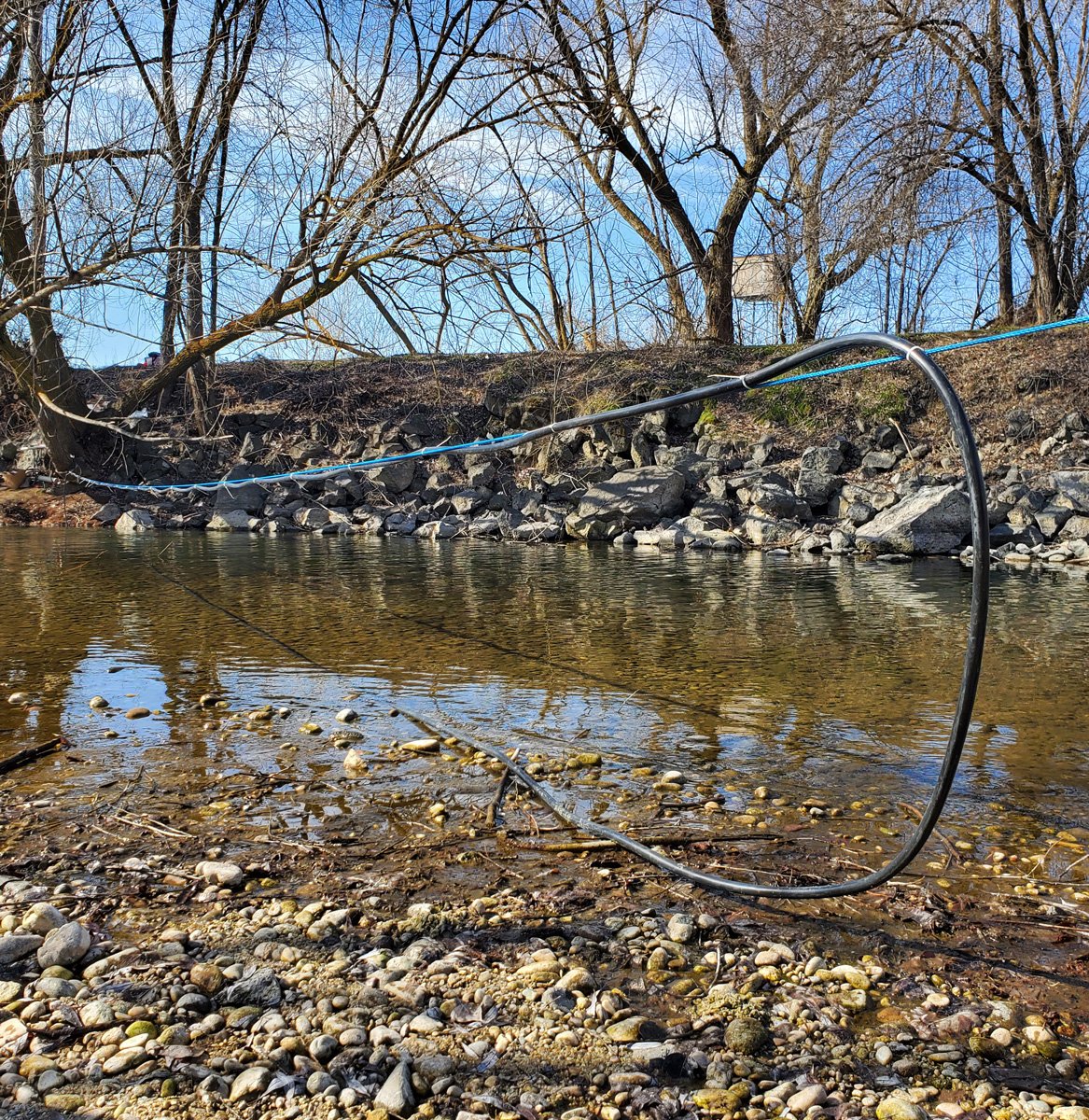

Submersible Antenna
Biomark’s instream PIT tag detection systems have been instrumental in monitoring timing of movement, survival, and habitat use of aquatic organisms. Biomark’s purpose built IS1001-MTS platform is flexible enough to sample a stream 1-m wide to over 70-m wide. Our systems are reliable and can be deployed short or long-term, depending on the study objectives.
Hydroelectric facilities can be challenging locations for PIT-tag detection arrays due the numerous potential sources of electromagnetic interference (e.g., frequency driven motors, water level sensors, fluorescent lights, etc.) and surrounding and embedded ferrous steel. Depending on the location, antennas may be unshielded, shielded, or contain ferrite tiles. Antenna designs take the number and velocity of fish/tags passing into consideration to construct the optimal antenna.
Implementation of the Wells Dam Bypass Baffle PIT-tag detection system was accomplished over a 2-yr period. The initial year consisted of developing and testing prototype antennas. A single IS1001-Master Controller, 4-IS1001 readers in submersible canisters and 4-low profile shielded/ferrite tiles were installed near the top of the bypass baffle in Spill Bay 2.
In 2006, the National Oceanic & Atmospheric Administration (NOAA) Fisheries, with funding from the Bonneville Power Administration, initiated a research and development project to develop a spillway PIT tag detection system.
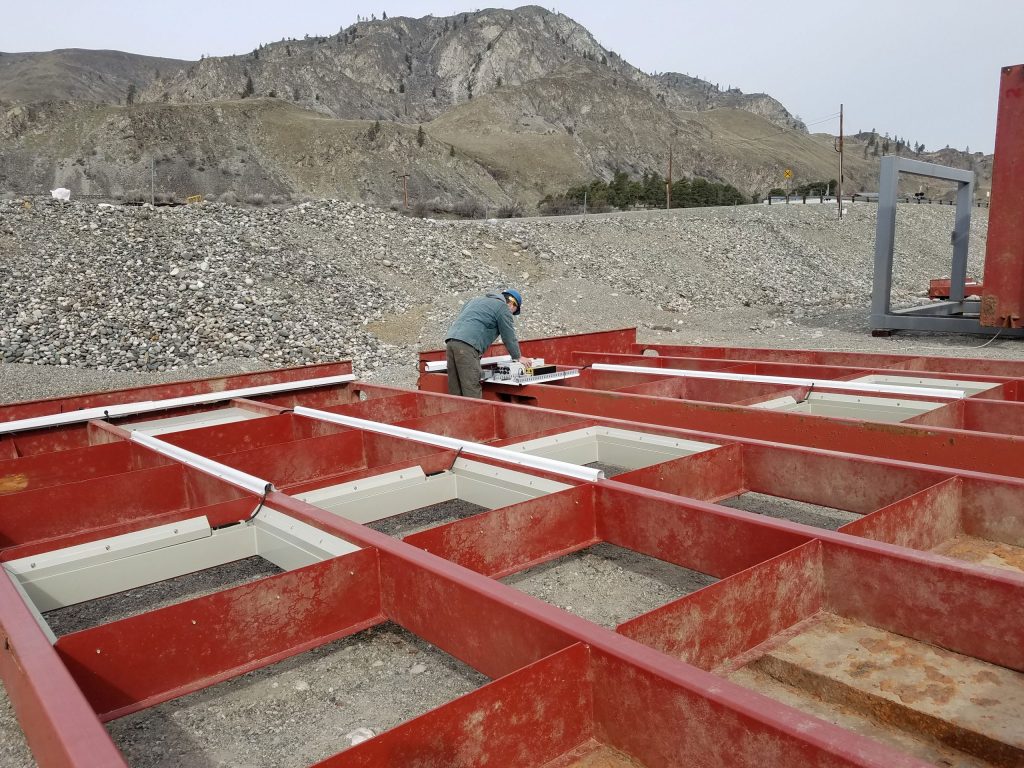
Fishways are considered waterways that are designed to allow species such as fish to pass through a particular obstruction. Fishways are used to monitor many different things such as migrating juveniles. The use of PIT Tags in fishways is a helpful tool on studying the fish migratory patterns as they pass through.
Due to the irregular shape of the weirs at the Sherars Falls Fishway, Deschutes River, the antenna cable was cut to length in the field and secured directly to the top of the notched weir. Custom-sized plastic plates were used to protect the cables from debris passing down the fishway and no impeded lamprey passage. A total of four weirs are monitored using Biomark IS1001-Master Controller and IS1001 readers.
Fish Passage
The use of a fish passage or otherwise known as a “fish ladder” creates natural barriers for fish to migrate through. In order for a fish to survive they must be migrate up and down river. The use of a fish passage system and PIT Tags helps to track the migratory patterns of fish as they make their way through the ladder. The ladder is typically placed in a river where there could be obstacles or obstructions that could be hard for the fish to be able to pass on their own. This provides a safe way for fish to migrate up and down the river.
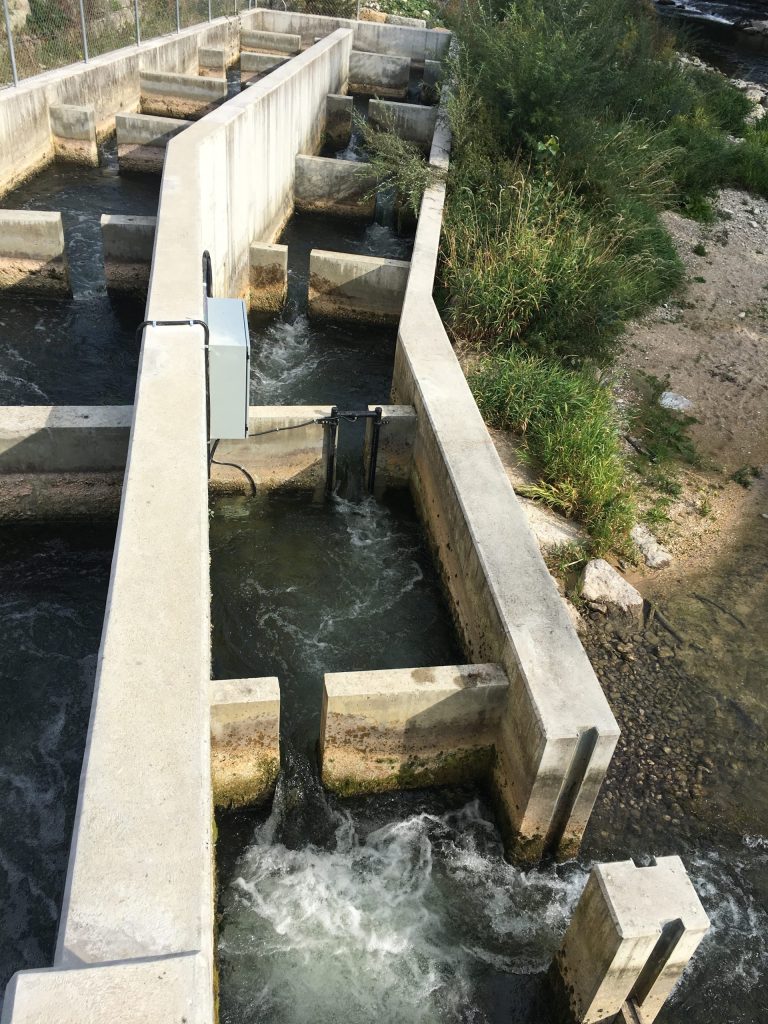
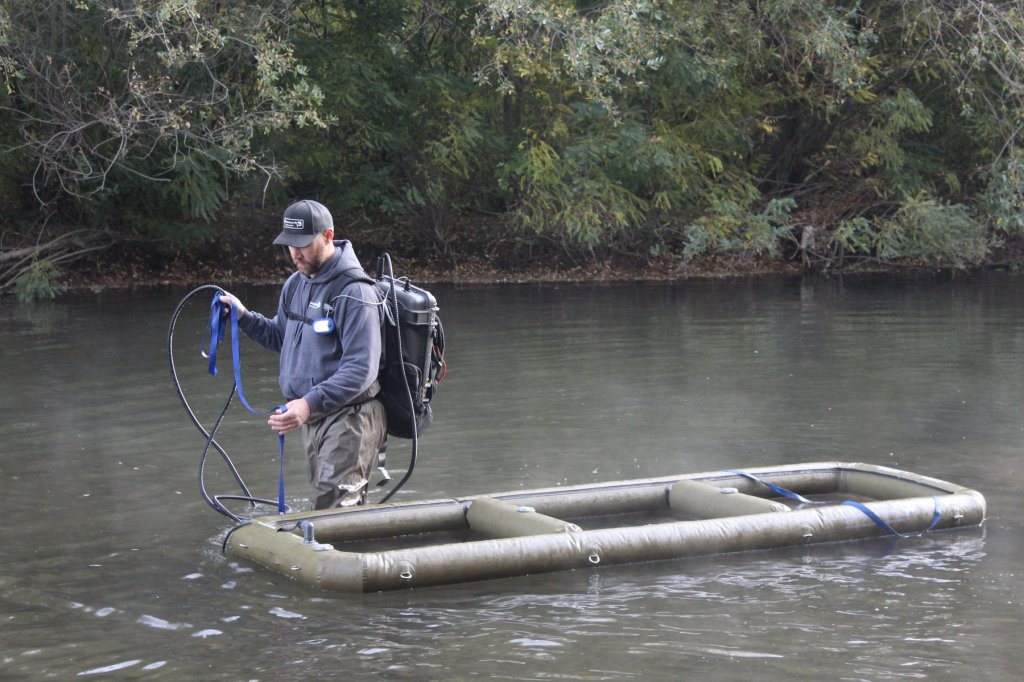
Inflatable, Rigid & Raft Antenna Systems
In addition to the systems that Biomark installs, we ship customers complete or nearly complete systems that they install. Biomark’s Project Managers and Sales Representatives consult with researchers to identify their study objectives, site characteristics, and sampling requirements, and then fabricate and ship components for the end-user to install. Our staff of Electronic Technicians are always available to provide additional support as the equipment is installed and on an as-needed basis any time in the future.

